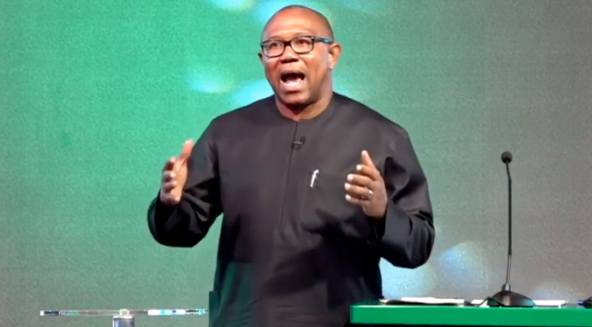Martha Agbani, a 48-year-old environmentalist, said she is touching lives through the work she is doing with nature. She keeps making such a statement with conviction after over four years of replanting mangroves in Ogoni, Rivers state, Niger Delta region of Nigeria.
Martha, a native of Gwara, Khana LGA in the state, was 19 years old when protests were held across Ogoniland requesting oil companies operating in the region to pay billions of dollars for damages and also protect the Ogoni environment from further degradation.
Royal Dutch Shell, a multinational oil company, found oil and started drilling in Ogoni in 1958. After leaving the area in 1993 – as a result of the protests – Ogoni became a shadow of its former self. Lands and rivers were polluted with oil. This left people in the region, who are mostly farmers and fishermen, with no means of livelihood.
Not only did the oil pollution kill the fishes and render the lands almost useless, but it also killed the mangroves — a valuable natural solution for climate change.
Advertisement
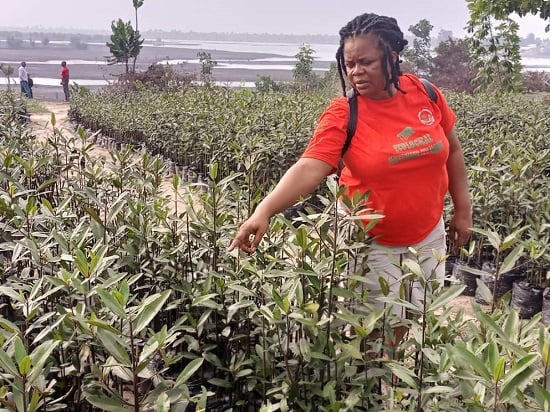
But one woman decided to take up the gauntlet and restore her ancestral land to its pristine state. Martha began the journey of replanting mangroves in Ogoniland in 2017, as a means of reviving the mangrove ecosystem in the area as well as empowering women in the process. However, before embarking on this self-assigned mission, Martha first set out to “liberate the Ogoni people.”
THE JOURNEY
As a teenager, Martha said she saw first-hand the carnage and sufferings that besieged her people in the periods following the conflicts and protests across Ogoni; and how her mother was actively involved in the movement, financing and providing other assistance to the protesters.
Advertisement
She was in her second year at the Rivers State Polytechnic when Ken Saro-Wiwa, late playwright and Ogoni activist, was arrested. She recalls that despite surviving the conflicts, the repression of her people by government forces made her conclude that the casualties are not only the dead, according to John Pepper Clarke. “Because it dawned on me that I was a casualty of that incident,” she said.
Motivated by her mother’s activism and Saro-Wiwa’s historic death, Martha joined the Movement for the Survival of Ogoni People (MOSOP) in 2003; and in 2009, she set up Lokiaka Community Development Center, her own NGO, to advocate for the rights of Ogoni women and empower them.
Mangrove restoration was not part of the mandates of Martha’s NGO when it began. “The stories of the sufferings of my people kept coming to my ears and I kept asking myself what I could do to alleviate these challenges that women are having,” she said.
In 2011, when the United Nations Environment Programme (UNEP) released its report on the environmental assessment of Ogoniland, Martha said it broke her to see that the restoration of the environment/mangroves could take up to 30 years.
Advertisement
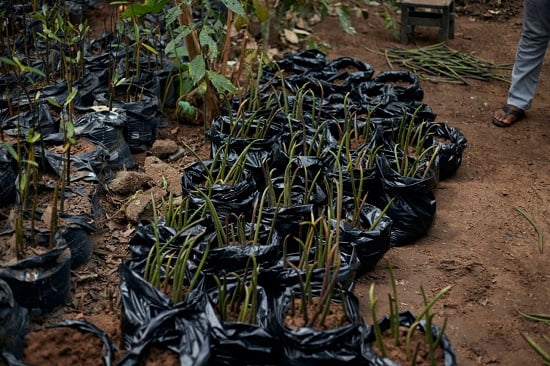
However, since the report also said mangrove rehabilitation is important from both ecological and economic points of view, Martha began to think about how to harness these benefits and fast-track the restoration process to profit her people.
So, Martha and her team got to work trying their hands on different species of mangroves to discover the ones that are indigenous to Ogoniland, and that will attract the right kind of biodiversity that once existed in the area.
“When we started, the idea was alien to many people. They said mangroves cannot be planted because we grew up to meet them; so if they are dead now, we don’t know what killed them,” she recalled people telling her.
But subsequently, the hard work started to pay off when Shell decided to begin cleaning up some communities and needed mangroves to replant. Martha saw this as an opportunity to begin training women in mangrove nurseries so that they could eke out a living from selling the propagules.
Advertisement
“We took these women and we trained them. We made them know about the different mangroves and the one that is indigenous to that habitat,” she told TheCable.
So far, Martha has trained over 250 women and facilitated the restoration of up to 1.3 million mangroves in Ogoniland.
Advertisement
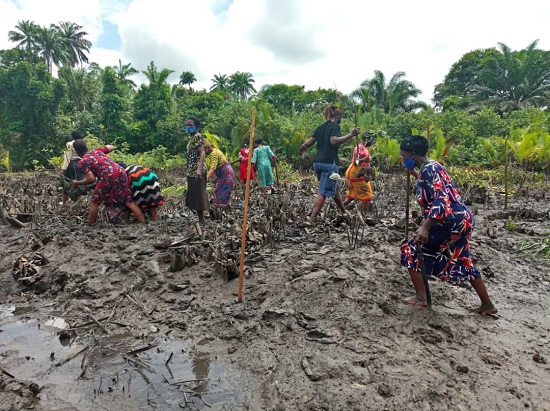
“OUR WOMEN ARE NOW SMILING TO THE BANK”
The women who were trained went ahead to start their own mangrove nursery and some who did not have arable lands began raising theirs in empty water sachets or plastic bags in front of their houses.
Advertisement
Now equipped with the skill to identify and replant the right kind of mangroves in their communities, some of the women have gone ahead to work for organisations rehabilitating the lands. They now also have the privilege of selling their mangroves to these companies at the rate of N500 to N1000 for one seedling.
Martha told TheCable that she is excited about the results the project has garnered so far, while she comfortably bragged that “our women are now smiling to the bank”.
Advertisement
Corroborating Martha’s claim, Barisi Dumbor, one of the beneficiaries, said she made up to N60,000 as profit from the last set of mangrove seedlings she sold.
“In my nursery, I planted three seedlings in each plastic bag; so I sold each bag for N500 and I was able to make up to N60,000,” Barisi said.
Asides from empowering the women to sell the seedlings, Martha also tries to engage them further by paying between N5,000 to N7,000 when they assist her team in working on sites Lokiaka Center is managing.

She said the women are not the only beneficiaries, but also the youths who assist in clearing the invasive Nypa Palm for mangrove plantation and the fishermen who get paid for helping to pick propagules from the river. It is a win-win for everyone in the community.
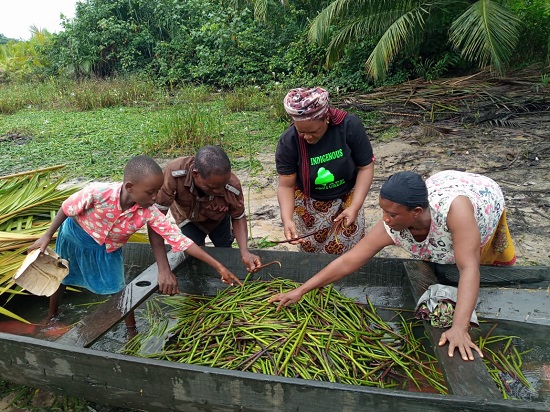
LACK OF FUNDING
As the popular saying goes, nothing good comes easy. This, for Martha, means she also experiences challenges while doing her work.
She told TheCable that working in a polluted environment means she and the women need personal protective kits like coveralls, rain boots and hand gloves; but due to lack of funds, they mostly work in the mud barefoot.
Martha is not the only one facing challenges. Some of the women she trained have also not had it easy.
For example, Jessy Nubani who has no land had planted her nurseries on someone’s land hoping to make some profit, only to visit the land one day – oblivious of the fact that it had been resold – found that all her mangroves had been destroyed by the new landlord.

Also, some of the women who live in highly-polluted environments with contaminated water planted their nurseries, but they did not thrive.
Despite the challenges, Martha is grateful that not only is her project empowering people, but the survival or otherwise of mangroves in the area also serves as a yardstick for measuring the cleanup of Ogoniland by the Hydrocarbon Pollution Remediation Project (HYPREP).
“So, if we plant the mangroves and it doesn’t thrive or grow, it then means the place wasn’t properly cleaned,” she said.
Nevertheless, Martha hopes funders would “look at ecosystem restoration, especially mangrove restoration, as a critical area to fund because mangroves have a high potential to sequester carbon.”
She believes environmental restoration should be a priority because it can foster peaceful coexistence. As far as Martha is concerned, “if nature is happy, man will be happy.”
Add a comment




